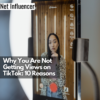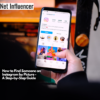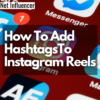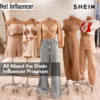Technology
How Ramdam Uses AI to Improve Creator Ad Production

After shifting from consumer apps to address inefficiencies in creator marketing, Ramdam has secured €3 million in funding to scale its AI-powered creator advertising platform. The Paris-based startup streamlines how brands source and manage creator content, replacing uncertain outcomes with data-driven results.
From Personal Challenge to Market Solution
For Xavier de Baillenx, Ramdam’s CEO & co-founder, the path to improving creator advertising began with his challenges as an app developer.
“Ramdam was a need we had with one of our apps. We were stuck in the app store in the U.S.,” Xavier explains. “I decided to get creatives to do TikTok and Meta ads, and I used platforms and agencies to get these creatives, but I was stuck.”
Taking initiative, Xavier developed his own approach. “I decided to go to TikTok micro-influencers specializing in cars because it was an app about car discovery,” he recalls. “I spent months getting around 30 pieces of content from micro-influencers, and one changed everything for me. It wasn’t the one that I would put money on, but it just changed everything.”
This experience revealed a significant market need: while creator-driven content proved effective, obtaining and managing it took excessive time with unpredictable results. “The idea of Ramdam was, okay, it took me three months to get those 30 pieces of content. What if we could build a solution to deliver it in three days?” Xavier says.
The Power of Creative Intelligence
Ramdam sets itself apart through what Xavier calls ‘Creative Intelligence,’ a platform feature that helps eliminate the uncertainty that defines much of today’s creator advertising. “We deliver creator ads that beat the odds,” he emphasizes. “We’ve trained an AI to select creators most likely to succeed.”
AI proves particularly valuable in creator selection due to its complexity. “There are countless factors to consider to know which one is going to be successful,” Xavier explains. “You want to analyze the hashtags the creator used, the past videos they did for the brands, follower count, etc. Multiply this by 300 million micro-influencers globally, making it almost impossible for humans to select the right creators for the brands.”
The platform demonstrates its effectiveness through measurable results, with Xavier sharing an example:
“We had this photo cleaning app called Swipewipe from the publisher MWM. A developer from Brooklyn generated only a few hundred downloads per day, and then they used our service to get creatives for their ad campaigns on TikTok and Meta. The 21st creative we delivered was from a Canadian TikToker called Madison, and this creative changed everything for them. They didn’t pronounce the brand name properly, yet we now have more than 200 million views.”
Ramdam enhances the entire production process. “When you select a creator with a brand, it’s almost 2% of the job,” Xavier notes. “The rest is negotiating the price and the contract and sticking to deadlines. You must set deadlines for the revised videos, the contracting, and the invoicing. We do streamline everything. The client is rarely in contact with the creator.”
This efficient approach addresses new advertising requirements. “Now you need to have hundreds of creatives that look organic, and one of them would become a top performing,” Xavier explains. “So you need to streamline the whole process of getting a lot of content, and this is what we do, making it seamless. We have steps, deadlines, ratings, and AI to facilitate everything. [Clients] click on a button, generate a brief they can validate, and a few days later, they can get dozens of videos ready for their campaigns.”
The Micro-Influencer Advantage
Ramdam focuses on micro-influencers, supported by compelling data. “Micro-influencers drive 60% more engagement than big influencers,” Xavier shares. “One word: authenticity. Social media users, especially Gen Zers, want to relate to the ads. They want to see someone like them.”
Performance data supports this strategy. “We found out that top-performing ads were straightforward,” Xavier explains. “It’s someone that vibes with the project and the product and shows in a very simple way how the products solved a problem for them. Not fancy scripts, not super funny products, not super over-produced videos, not super funny actors – very simple. And this is why we have so much success. It just works. It generates more clicks, more engagement, and improves the ROI.”
As social media platforms shift their focus, follower count matters less. “Now, when you see all the trends for this year, everyone is talking about trust and connection,” Xavier notes. “The main pain point for most brands is they have no idea which creators they should select: a creator with 1 million followers or maybe one more aligned with what I do, but with only 2k followers?”
Ramdam helps brands make informed decisions through data analysis. “There are so many different parameters that you have to take into account, and you don’t know which one will impact your ads,” Xavier explains. “When there are so many different options, AI excels because it can analyze millions of different parameters and similar campaigns to determine which creators were successful or not successful.”
The platform shows particular strength in specific industries. Xavier highlights the company’s “super successful” performance in the music industry:
“We’re working with Sony Music and Warner Music because, as you know, when you want to grow as an artist, TikTok and even Instagram are the places to be. We can be super helpful with artists because authentic, relatable content from micro-influencers drives real engagement and results.”
Understanding Modern Social Media Distribution
With algorithm-driven content discovery reshaping how content reaches audiences, Ramdam’s approach proves especially relevant.
“You can now have 2,000 followers and generate 20 million views on a video, and you can have 1 million followers and generate 200 views,” Xavier notes. “Why? Now, everything is driven by the algorithm—not only TikTok but Meta with Reels, YouTube with YouTube Shorts, and even LinkedIn.”
This shift influences how brands approach creator marketing. “The strategy of brands is not only relying on organic, it’s a hybrid strategy, paid with organic,” Xavier explains. “You get content posted by maybe 20 micro-influencers, and then you would put money on TikTok Spark Ads or Meta’s sponsorship ads. If you want to target Gen Z in London, for example, as an ad, you can target Gen Z in London and then have some video that will stand out as an ad.”
Ramdam founders: Emmanuel Lemoine, Xavier de Baillenx, and Benjamin Combes
AI’s Role in Creator Content
While AI drives Ramdam’s operations, Xavier maintains a balanced perspective on its role in content creation.
“AI won’t replace everyone and especially not going to replace creators,” he asserts. “I think AI is great as a tool, as a facilitator. It’s great, for example, for matching the right creators with the right brand or analyzing a video and telling the creator that you should improve it.”
He takes a measured approach to AI-generated content. “I know there are many AI UGC platforms around that deliver content directly from AI Avatar,” Xavier notes. “I think it’s great for testing but isn’t the right solution if you’re looking for a top-performing ad. You will not find the top-performing ad coming out of AI UGC. The platforms are going to flag this content from AI UGC.”
Xavier sees AI as enhancing human creativity. “The creator can still use AI to edit the video, add background, even do their avatar and use their avatar with AI,” he explains. “As long as the creativity comes from them, AI is completely okay. But it’s delusional to say, ‘I would push a button, get thousands of videos, use them, and that’s all.’”
He draws a parallel with the music industry: “I don’t think the next Paul McCartney or Stevie Wonder will be an AI. What we usually see is a top-performing ad that comes from an accident. AI cannot cause accidents or explain with their own emotion how this cream is good for their skin.”
Understanding AI’s capabilities and limits proves crucial. “AI is excellent for facilitating, combining, and making things faster and more efficient. But AI cannot replace creativity,” Xavier points out.
Strategic Growth and Future Plans
The recent €3M funding round brought together strategic investors despite market challenges.
“We have three funds that went with us,” Xavier explains. “The first is Moon Venture, a French fund backed by top executive entrepreneurs. The second is Karista, a deep tech fund based in Paris, which has already supported us in the pre-seed. And last but not least, we have the U.S.-based Data Tech Fund, focused on data.”
The funding supports product development and team expansion. “Most of the money will be used to hire top AI, data, backend, and frontend engineers,” Xavier says. “We need to grow. Most of our clients are based in Europe and the U.S. We’ll keep pushing those markets to become the global leader for UGC platforms.”
The Future of Creator Advertising
Xavier’s vision for creator advertising focuses on predictability and efficiency. His goal? Creating the “first creative intelligence platform.”
“I believe that tomorrow, creator ads will be human-created but will become a commodity for advertisers,” he states. “The AI will be able to spot the right creators and analyze the content to ensure that the content and the categories align with the brands.”
The entrepreneur believes an era of micro-influencers and authentic content is approaching, slowly but surely bringing an end to “overproduced ads.”
“Mature advertisers, such as Voodoo, are going all in on [authentic] content because they know their stuff, and it’s super successful. But 99% of advertisers are not here yet,” Xavier concludes. “It means that it’s only the beginning of a new era where millions of micro-influencers will be able to express themselves, earn money, and for brands to rely on real consumer creators to make their promotion.”





















